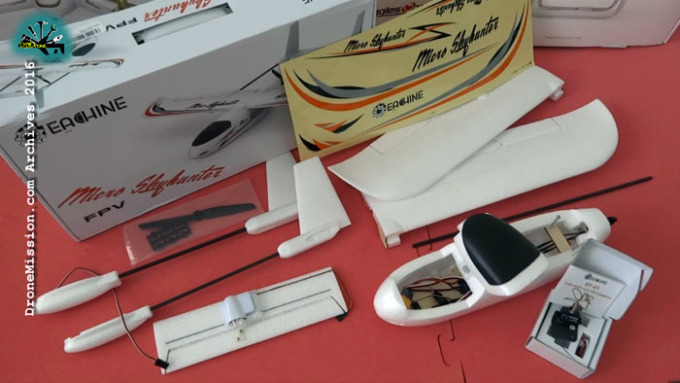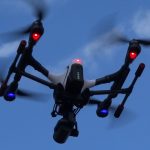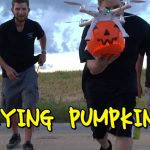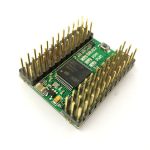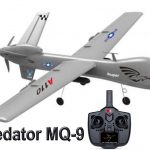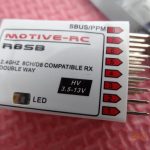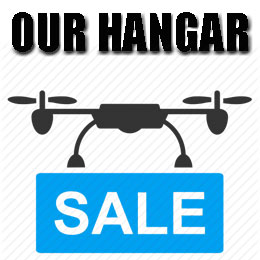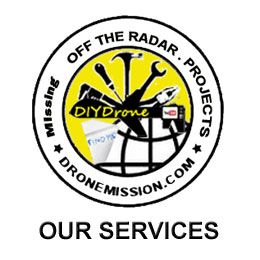Tag Archives: FPV
FXT Mars S T71 Micro FPV Camera 1000TVL
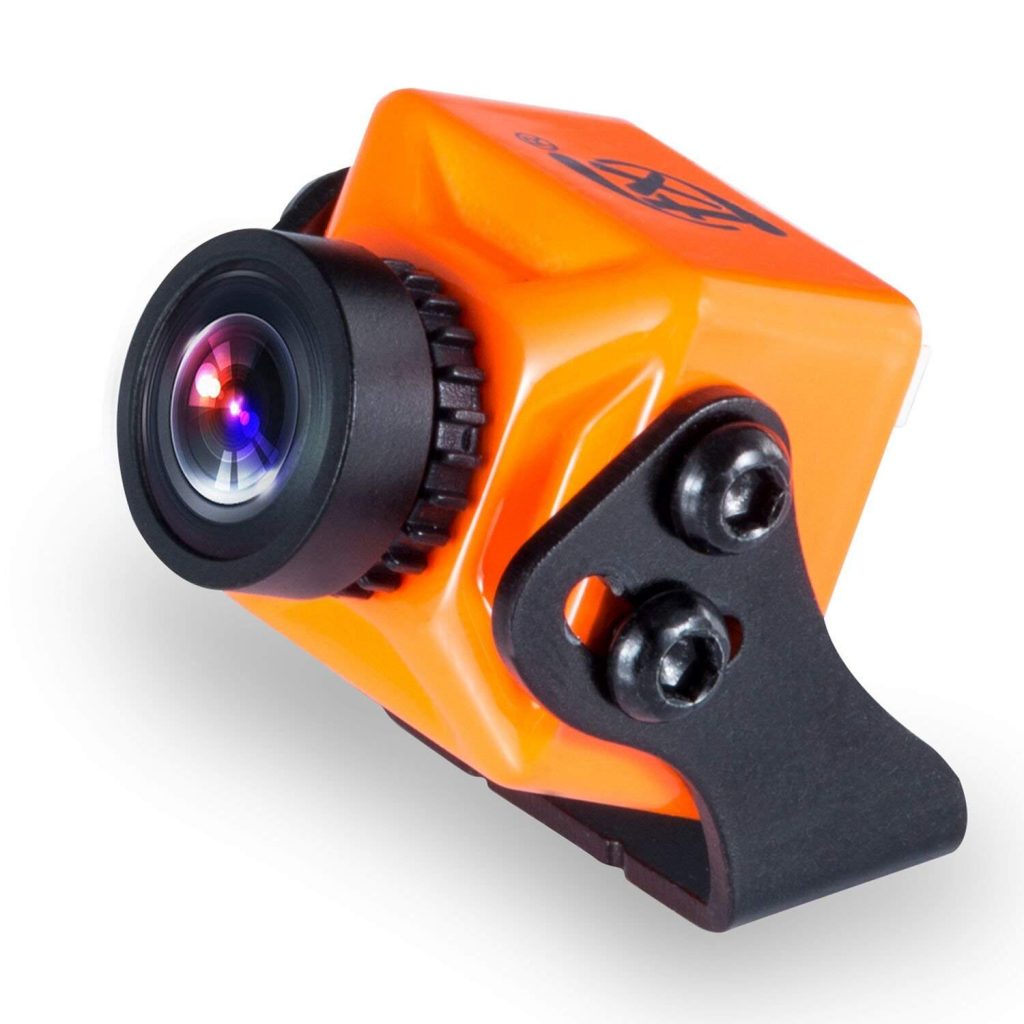
Introducing the FXT Mars S T71, easy to setup 1000 tvl fpv camera. In a nutshell, it shows me the voltage and that is a big win for me. The color production and sharpness not so much.
This little camera comes in various colors and displays the voltage balance on screen. Orange and red color is an added advantage to help me locate a lost camera in an open field. Wide-angle, as I can see the cockpit from the wing, on a plane.
 Input voltage DC4.8V to 36V allows me to safely power up from the main flight battery or a secondary battery. This camera is super small, about a size of a penny, and lightweight. It is wired ready with a standard JR transmitter signal, ground and power cable. The power cable is separated, so you can power your camera in various ways. However way you decide to power up, keep in mind the screen will display the voltage, a useful feature that is built-in…
Input voltage DC4.8V to 36V allows me to safely power up from the main flight battery or a secondary battery. This camera is super small, about a size of a penny, and lightweight. It is wired ready with a standard JR transmitter signal, ground and power cable. The power cable is separated, so you can power your camera in various ways. However way you decide to power up, keep in mind the screen will display the voltage, a useful feature that is built-in…
ODRVM 4k FPV camera

The latest actions sports camera ODRVM 4k talks. We took it out to compare with the Git2 camera. Here are some sampling of footage filmed at Disney. These ultra vivid cameras are becoming very affordable these days.
The ODRVM comes with in a very nice case with accessories, a user guide in 4 languages. It comes with a remote controller, a great way to start/stop a recording from the distance or when the camera is placed in a location not easily reachable.
User Segment
Camera Enthusiast, Budget $69 (May 2017 source: Amazon)
Our Notes
Lets take a look at the camera. On the front we have the power and mode button. The shutter/recording button is on the top with a LED indicator. By placing the LED indicator on the top, helps to prevent a blinking reflection while filming closeups and through a window. The back contains the 2″ LCD screen for framing shots. Battery compartment is at the bottom. Right side has the button that allows you to scroll up and down button, a speaker and the WiFi on and off button. On the left side has a micro USB, micro HDMI output, microphone, and a micro SD slot.
It is slightly bigger than a GoPro 3, but is actually lighter, weighing just 63 grams.
The details are sharp, colors are vibrant. The ODVRM has an excellent wide dynamic range, even when a subject is backlit by the sun, you can usually see their face. The saturation is good without looking over-done.
The white balance on the camera adds colors to balance the light source, for example on a overcast day, the image can look bluish if left unadjusted. This auto white balance control in your camera sees the cool color temperature and adds some red to warm the colors, as a result you may see a tint of red.
The menu system is straight forward, simple to use and intuitive. The settings selected are displayed on the screen which is absolutely useful to view before you begin filming.
Voice prompt can be useful in some situations, it prompts you when your battery is low and each time you start and stop recording. You may find yourself turning it off after a while, unless you plan to edit out every voice prompt on the recorded videos.
The field of view options are 170, 140, 110 and 70. Anti-shaking and gyroscope is available as a option.
A feature we like is the auto time-lapse, a mood feature to capture moments in time.
The maximum photo size is 20m and UHD 4K video at 24 fps or more popular at 1080p 60 fps or 720p at 120 fps.
Filming at 4k is sharp, but not as smooth, and that seem to the same problem with the Git2.
Similar Models
Users have considered these 2017 alternatives: Git2, Firefly 6s
Factory Specifications
- Video Resolution: 4K 24fps; 2K 30fps; 1080P 60fps; 720p 120 fps; 720p 60 fps
Image Resolution: 20M, 16M, 12M, 10M, 8M, 5M, 2M , VGA selectable
Lens: 170°/140°/110°/70° selectable
Shooting Mode: Single Shot / Self-timer (2S / 5s / 10s / Double)
Time-lapse Record: 100ms / 200ms / 500ms / 1Sec / 5 Sec
Loop recording: Support
Voice prompt: Support
Motion Detection: Support
Frequency: 50Hz/60Hz
USB Interface: micro USB 2.0, micro HDMI
Power Source Interface: 5V/1A
Battery Capacity: 3.7V Li-ion Battery 1050 mAh (Two Batteries Included )
Recording Time per battery: 40 minutes/ UHD 24 fps, 60 minutes/1080P 30fps , 70 minutes/720p 120fps
Operating System (OS): Windows XP/Vista or Above/Win7/Mac os
In terms of ranking, I would say it is in the top 4 favorites during this release recorded May 2017. An update to follow. (Current Picks dronemission.com/top5)
Eachine VR D2 Pro Focus Adjustable
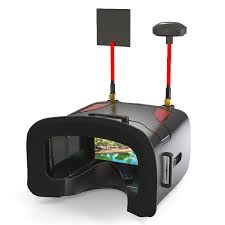
Just over 3 years ago, we had a challenge finding an affordable pair of goggles for FPV, let alone a DVR. Eachine VR D2 Pro Upgraded Goggle delivers an All-In-One (AIO) solution with built-in diopter correction lens, a DVR, dual diversity receivers, with RSSI, includes a tripod mount and best of all within budget
This is what I have been waiting for, corrective lenses for people who wear glasses, nearsighted, this helps just a little, I wouldn’t say it is compatible for everyone, but I can now read the osd without glasses having been using -2.0 diopter on all my other goggles. I have the lens slide all the way to the front. There is a slider on the left and right, and you just adjust it to best fit your eyes.
User Segment
FPV Piloting, Off the shelves. Budget [$] (PRICE CHECK: $89.99 ■ May 2017 Arthur’s Pick)
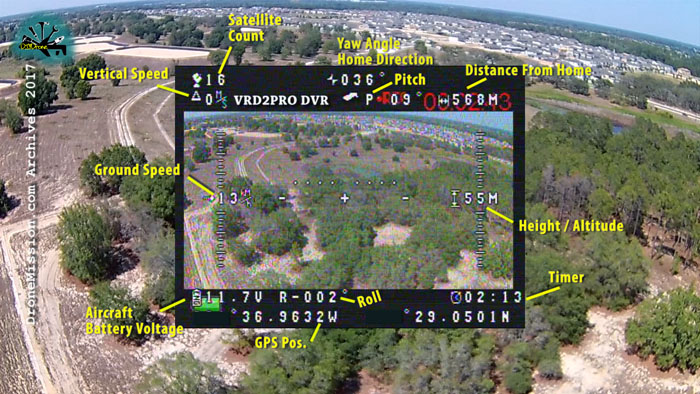
What To Expect
The menu system is broken down into 5 sections.
What I like about the upgraded functions are the On Screen Display (OSD) and Recieved Signal Strength Indicator (RSSI). The voltage of the goggle battery and frequency selection is shown; it is not recorded, but overlays on your screen. It is suggested that we calibrate the RSSI before each flight. The A&B signal strength helps me identify the direction of a lost aircraft to some accuracy, as you can hold the goggle against your chest and rotate around, and then foolow the direction with the strongest signal.
It accepts upto 64 gb of memory storage and records at 16000 kbps Bitrate at 29.97 fps.
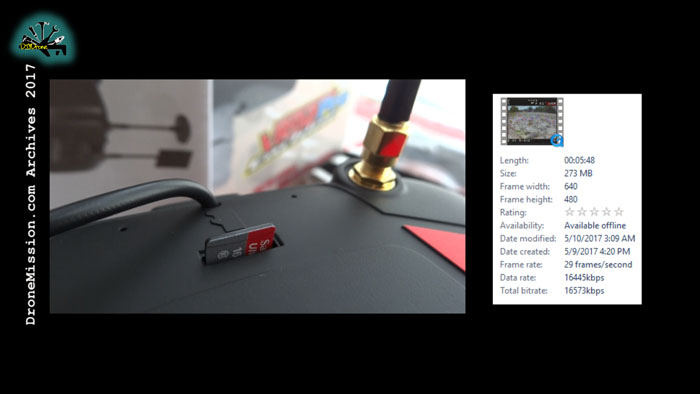
Competitors / Similar Models
Users have considered these 2017 alternatives: Eachine Goggles2, Walkera Goggle4, Kylin Vision
Factory Specifications
Screen size: 5 inches
Screen resolution: 800×480
Record : VGA(640*480),D1(720*480),HD(1280*480)
Frequency channel: built-in 40CH 5.8GHz receiver
Battery : 2S 7.4-8.4V Lipo battery
Battery duration: 2.5 hours
Antenna connector: RP-SMA
Mushroon Antenna : RHCP, 6dBi
Panel Antenna : 6dBi
DVR Max Support: 64G SD Card
Goggles weight: 285g (without antenna)
About Eachine http://dronemission.com/youtube/eachine/
Makerfire Micro FPV Racing Drone
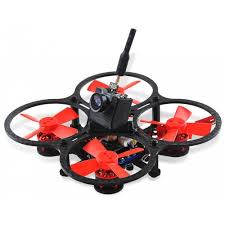
Makerfire Micro FPV Racing Drone is the latest entry into ducted fan micro racers joining the Tiny Whoop™ race. For the value and money, this quadcopter comes Ready To Fly or also available Crazepony the Bind-N-Fly version with DSM receiver. We received a BNF version from GearBest to test against a Devo 10 Deviation with DSM protocol and the results are good.
Analysis
Micro quadcopters have come a long way, with Jesse Perkins mounting a small FPV camera and video transmitter, showcasing some amazing indoor racing and calling it the Tiny Whoop™. Several manufacturers have since began to introduce their version of affordable ducted fan quadcopters and Makerfire Micro is noted to be a good entry in this category of indoor racing. The tall propeller guards allows the micro quadcopter to bounce off the wall without damaging the fans (propellers), surviving most crashes.
It is also beneficial to note that when paired with the popular opensource F3 flight controller, manufacturers are able to lower the cost of production. With a F3 flight controller, pilots can get several flight modes available instantly.
In Rate/Manual/Expert, this mode is the most challenging flight mode which uses the gyroscopes from the flight controller while the accelerometer is disabled . It allows the best control of the quadcopter, allowing pilots to do some amazing hairpin turns and aerobatics. This will however require some experience and not intended for beginners.
In Angle/Stability mode, the accelerometer is activated. This enables the quadcopter to self-level. If you don’t put in any input, the quadcopter will remain level. This is the mode that is used on the budget entry level quadcopters. It is however a great way for all pilots to practice control and orientation by flying in a number 8 pattern
In Horizon mode, this is a mix between Rate mode and Angle mode. It gives a pilot the best of both modes to perform flips and rolls and yet self-levels when the pilot centers the sticks but with Rate mode at it’s endpoint.
In the early days of racing drone, an inexperienced pilot would suffer a flip of death (FOD), but to the rescue, came “Air Mode”. In Air mode, pilots will be flying at all throttle levels, so if you chop the throttle, the stability corrections still come into play, even at minimum throttle, allowing the pilot to perform some amazing maneuvers at low throttle rates.
You will have to assign Air Mode as you would to a switch when setting up flight modes within Betaflight. The suggested best practices to test Air mode are:
- Arm motors (motors start spinning idling as an option)
- Enable AirMode with switch (check to ensure no idling windup on ground)
- Lift off and fly around (motors will never stop in flight even at lowest throttle and self levels)
- Just prior to landing, disable Air Mode by switch (as a safety)
- Land and disarm motors
The benefit of using ducted fans is they are fully protected and prevent the fans from causing any damage to walls, as well it is safe enough to be caught by hand!
One of the best kept secret of a Walkera transmitter is the ability to support multiple protocols with opensource Deviation. So if a pilot is flying a selection of models, such as Walkera, Blade, Eflite, Hubsan x4, Parkzone Micro Warbirds, Spektrum planes, you can turn an affordable Devo transmitter into a power house that supports these protocols. With a Walkera 12E 12 channel radio transmitter selling at $85 versus a Spektrum JRP12 at $1249, you can see the cost benefit of marketing a Walkera Devo 10 or 12E for micro racing drones.
Pilots can easily spend 5 minutes on each flight, setting up and flying. The actual flight may last 3-4minutes. On a Mode 2 radio transmitter, throttle stick is on the left.
Binding the Makerfire Micro to a new radio transmitter can be a challenge, you will likely need two pairs of hands to hold down the bind button, at the same time power on. However, you only have to do this once.
Once you have your radio bound to the Makerfire Micro, you will want to run some tests within Betaflight Goggle Chrome App. You will need a USB cable to connect your quadcopter to a computer. Make sure your throttle is within range, and the receiver is responding in the right direction for all stick movements.
To begin your first flight, power on your radio transmitter first, make sure your throttle stick is at the lowest point. Check to make sure all your switches are up (position 0). Connect your battery to your copter, lay the copter flat on a hard surface immediately.
Move your left throttle stick down to the lowest point and to the right, to unlock (arm) the motors. The copter is now live. To lock (disarm), move your left throttle stick down to the lowest point and to the left. You can change your setup to switches with Betaflight.
Flight Characteristics
The Makerfire is easy to fly on Horizon mode and can be switched to Angle mode or Rate mode. It accelerates at a high speed, so setting up dual rates is a good idea. Low rates at 70 scale on 30 exponential is a good start. It survived all of our indoor and outdoor crashes, which makes this quadcopter a hardy little thing.
Market Segment
Beginners, Indoors, Park Flyers, Ready To Fly, Off the shelves, Budget [$] (PRICE CHECK: $64PNP ■ Mar 2017 Sara’s Pick)
Competitors / Similar Models
Users have considered these 2017 alternatives: Furibee F36s, KingKong Tiny6, Eachine E010s, Blade Inductrix
Camera
The camera is a acceptable 520 TVL camera, capable for night flying. See video for results.
Factory Specifications
Flight controller: F3 EVO with STM32 F303 MCU
Receiver: DSM 2.4GHz 8CH
Video transmission: 5.8G 40CH 25mW
Video resolution: 520TVL
Receive distance: 300m
Motor: 615 coreless motors with 65000 RPM
Battery: 3.7V 200mAh 35C
Flight time: about 5 minutes
Charge time: 30 minutes
Charging method: USB
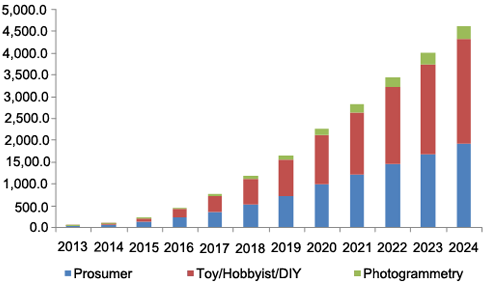
Market Demand Trending
Buy/Sell. Manufacturers and dealers, these tiny inspired whoops are hitting the market as fast as the first phantom and 350 pros were a few years ago, as hobbyist takes a turn towards micro quadcopters; showing a steady growth in the market. A snapshot from Grand View Research 2016.
Eachine Micro Skyhunter FPV RC Airplane
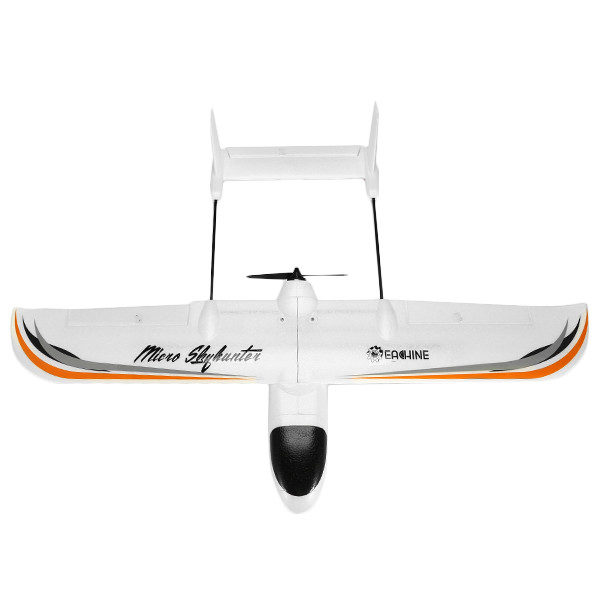
Skyhunter, has been an all-time favorite plane for lots of long-range FPV pilots. Eachine doing it’s match, takes on the micro version, at 780 mm, 3 channels, plug and play. Take a break from the racing drones, here comes a racing plane. If you are looking for a budget, simple hand launch RC FPV plane with some speed, you may be in luck.
User Segment
Keen Beginners, Park Flyers, Plug and Fly, Budget $59 BNF (source: Dec 2016 Banggood)
What To Expect
The Micro Skyhunter FPV is one of the coolest miniature version of the Skyhunters released under the label of Eachine. I have here the FPV version with 40 channels and 800 tvl camera which you can just slip on or remove anytime.
Here is a video of everything you need to get setup.
The Skyhunter comes in this small box just under 1 1/2 feet, very well pack, box in a box and individually wrap. All electronics are pre-assembled, plug and play, so you can begin flying on the same day. It comes with a few cabon fiber spars, the main spar and re-enfocement along the wings. You can see the signature look of a skyhunter with two veritical stablize. I like how everything is pre-installed, 5 grams servo, servo linkages are all ready using JR connectors. Included is a Hobbywing 20 amps electronic speed controller(ESC) with a XT 60 plug.
There is plenty of room, you have three separate compartments, one section for your receiver and flight controller if you are using one, and a two in one canopy held on by magnets for the battery and a convenient camera fpv bay. The wings are held together with two bolts.
The camera is pretty good, other than the 25 mw range limitation, we have no complaints. You can of course always use a different video transmitter. There are some crack lines, along the joints, but nothing too serious, I just add a little tape along it and tape along the leading edges, wing tips and base for additional protection and to prevent wear and tear.
Motor is powerful for this size plane, 2300 kv 2204.
The camera comes with a holder plate, very nice, and you simply secure it on the camera bay when in use. I just tape the plates down for easy removal.
Decals are included, but I like my usual red/blue white colors.
Overall, this plane has everything you need, easy to assemble as all the electronic are installed. It uses XT 60 which means LiPo batteries are easily available in the market. The bigger question is, are you up for a 3 channel plane, if you are, this is definitely a keeper within budget.
Flight Characteristics
Tracks very well, but not a great glider. We are currently completing a few more flights before reporting back. Standby.
Camera & Video Transmitter
The camera is okay, a 40CH 25MW VTX 800TVL 1/3 CMOS FPV Camera. See video for results.
Factory Specifications
Brand Name: Eachine
Item Name: Micro Skyhunter
Wingspan: 780mm (31″)
Length: 540mm (21″)
Channels: 3
Weight: 230g (without battery)
Color: White
Material: EPO
Camera: Eachine EF-01 AIO FPV camera
ESC: 20A 2-3s with XT60 connector
Motor: Eachine 2204 2300KV
Motor MAX Thrust:440g
Motor Weight: 25g
Motor Shaft Diameter: 3mm
Propeller: 6×3 or most 5-6″ multirotor props
Servos: 3x 9 gram
What we love about it
- Well design and quick assembly
What is essential we hope to see in the next version
- Nothing really to change, but love to see more miniature version of classic planes under the Eachine label
360 FPV videos
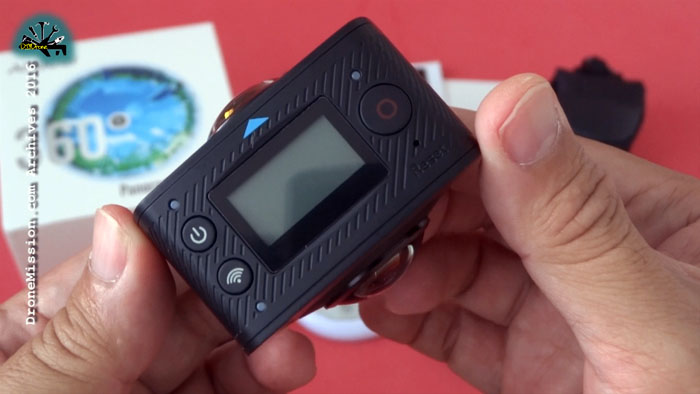
What the Andoer Dual-lens 360°, Ricoh Theta S and Samsung Gear 360 have in common are the dual-lenses that allows you to film and upload 360-degree videos. This give rise to a new perspective if drone aerial first person view
YouTube and Facebook now supports uploading and playback of 360° spherical videos. To watch 360° videos, you need the latest version of Chrome, Opera, Firefox, or Internet Explorer on your computer. On mobile devices, use the latest version of the YouTube app for Android or iOS.
(Best viewed in 360 youtube app or goggle directly by opening this link https://youtube.com/360)
For an immersive experience, you can even watch 360° videos with a cardboard goggle attaching the YouTube Android app.
After a week of filming, we begin to discover that is just a few things to consider before creating the video.
- Decide the best way to mount the camera without appearing to be holding a tripod (you likely don’t want to be showing your crown, if you realized you are being filmed no matter where you stood in 360).
- What if you want to incorporate text on the video or include a logo, not knowing if your audience is looking front, back, sides, down or up.
- Storyboarding and sequencing scenes in 360. How do you mix 2D and 360 footages?
The following 360 cameras are compatible with YouTube and are available today:
• Andoer Dual-lens 360° (budget $125 source: Nov 2016 camfere.com)
• Ricoh Theta S
• Samsung Gear 360
For the best results, encode your video at a high resolution and according to YouTube’s advanced specifications. YouTube currently supports 360° videos with 24, 25, 30, 48, 50, or 60 frames per second. We recommend uploading 16:9 aspect ratio stitched videos in 4K (3840×2160) resolution as a loss of resolution is inevitable when playback in youtube 360. A 1080p video, when stretçhed and wrapped around the sphere will look like 480p.
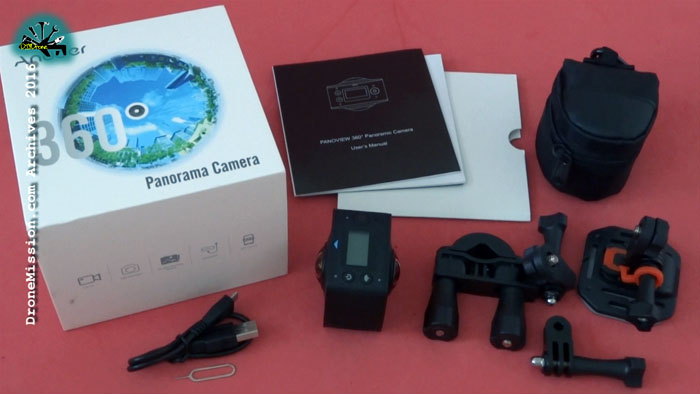
When uploading your 360° video, don’t make edits to the video using the YouTube Video Editor and Enhancements tools on desktop or mobile. These tools don’t currently support 360° videos.
Before publishing, schedule the video for a later date and verify that the file has 360° playback enabled by watching the video on your device. It may take up to 30 minutes for 360° playback to be processed after uploading.
360° videos on a browser feature a pan button in the top left, and can be rotated using the WASD keys, so look for these features to confirm your video is in 360.
If you take the video straight out of the camera and try to upload it to Youtube, it’s not going to work properly. The video will upload and be available, but when you go to view it you’ll see a stereoscopic image–an odd-looking video of side-by-side circles, each showing the hemisphere captured by one of the two lenses.

To make it work properly there are two steps you have to do before uploading it.
1. You will need to convert the image from stereoscopic view to an equirectangular one. That will combine the two hemispheres into a wide view with dimensions where the width is exactly double the height (otherwise known as a 2:1 aspect ratio). And the tops and bottoms of the frames will look strange and stretched. But when used in a specialized 360° player those stretched parts of the frame will fill out when you look up or down, wrapping around the sphere 360.
If you own the budget Andoer 360 camera, you can use the recommended unregistered Symax 360 software – Open Convertor, set Video Quality = High, Start.
2. In order to upload and playback a 360° video file, you’ll need to modify the metadata of the video file with an app or script before uploading.
Follow these instructions to install an app that will add the necessary metadata into a new file for you.
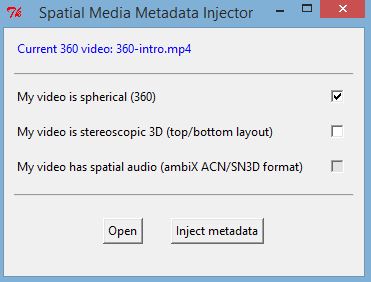
- Download the 360 Video Metadata app for Mac or Windows recommended by YouTube
- Un-zip the file, then open the 360 Metadata Injector app. If you’re on a Mac, you may need to right-click the app and then click Open.
- You can also add the metadata using a Python script.
- Select the original or edited 360 video file
- Select the checkbox for My Video is Spherical (360) and click Inject Metadata. Do not select the “3D Top-bottom” checkbox. For more information, refer to upload instructions for virtual reality videos.
- Save the file that will be created suffix with “injected.mp4”.
- Save the file. A new file will be created automatically in the same location as the original file.
- Upload the new injected file to YouTube.
- Wait for the 360° conversion to process. This may take up to 30 minutes for a 7 minutes video.
Tip: Andoer Dual-lens 360° 960p on Premiere Pro, follow 1920x 960 size, h.264
Mobius Mini Camera
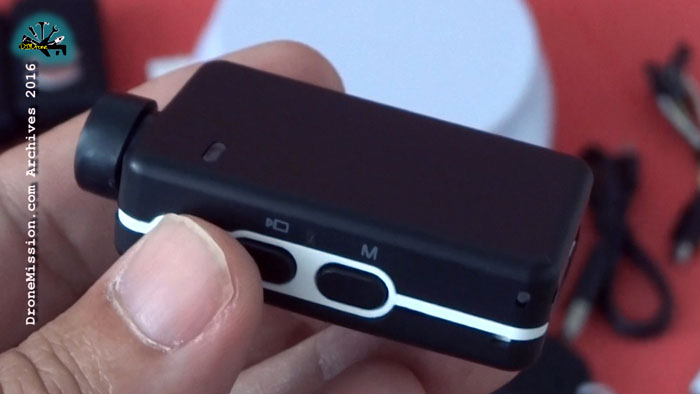
Mobius Mini at 27 grams is a major achievement, filming at 1080p 60fps with an amazingly low latency for FPV. You can almost add this mobiusmini camera to any 150 size quadcopter or 800mm airplane. We took it for a test flight, compare it with the FireflyQ6, unbox it and review the design.
Wow… MobiusMini has a very low latency! had a good flight with the mini and have included the latency test results. Says a fraction of a thousandth of a second, subject to your own interpretation. See for yourself and pause your screen to subtract. A snapshot is a frame in time, regardless of what you are viewing with.
Firefly 7S HAWK-EYE
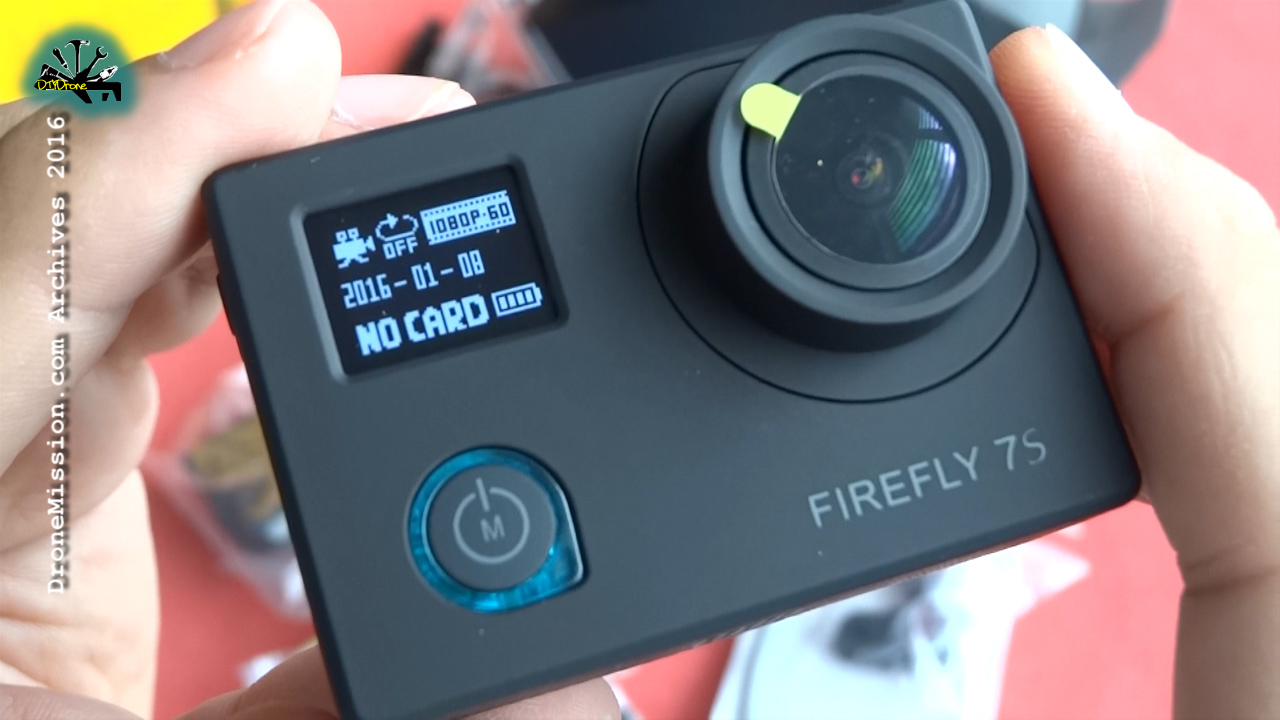
HAWK-EYE Aerial Video Technology is known for it’s ultra vivid cameras with GYRO image stabilization. The Firefly 7S 4K FPV action sports camera camcorder is the latest entry into the market with a 2 inch LCD screen. This comes as a nice surprise, following suit the recent Mobius-looking Q6 camera that is taking the market by storm this month. With the LCD screen, it allows you to see what you are filming; at times you only get one chance on a shot, and not seeing what you are filming, can be a disappointment if you missed that only shot.
HAWK-EYE Aerial Video Technology series of cameras took the challenge to GoPro with a third of the price, putting GoPro in a tough spot. This round, a new challenger to it’s rival, Git2.
AOMWAY FPV 200mW 700TVL AV Transmitter
If you are looking for a quick way to view the world from the sky, the Aomway Mini video transmitter packs 200mW of ultra clean 5.8GHz power in a micro sized video/audio package integrated with a 700 TVL camera. That’s right Plug N Play FPV! and at 19 grams!
First Impression, love the fact that it is plug and play. Easy to use, just deciding how you want to power this FPV gear is the only challenge you may have or maybe not. It comes pre-wired with a standard JST battery plug, allowing you to use any battery type, not limiting to AA or LiPo.
Eachine EV800 D FPV Goggle and Monitor
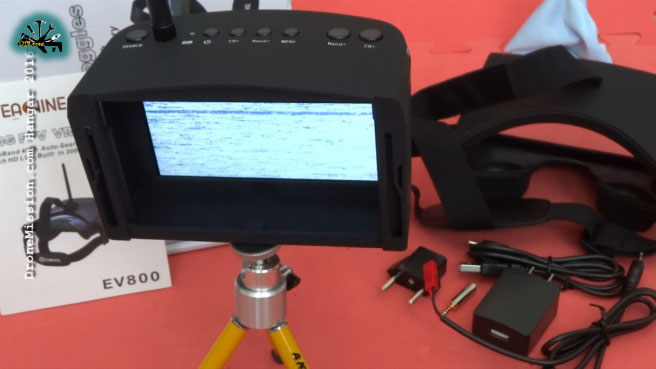
While testing several goggles for DM, Eachine EV800 caught my attention. Not only was the price great but something we have been doing, making a spare fpv headplay as a monitor. Eachine EV800 was designed with that in mind, a separable goggle 5 inch screen that can be used as small monitor with a tripod. The upgraded EV800D is even better.. brilliant!
 First Impression, we love how it separates and serves as a monitor. In terms of the reception, clarity and usability, we have to report back after a few more tests. Standby.
First Impression, we love how it separates and serves as a monitor. In terms of the reception, clarity and usability, we have to report back after a few more tests. Standby.
Target User Segment
Keen FPV Beginner Pilots, First FPV Investment, Ready To Use, Budget USD$79 MAP (June 2016 )








